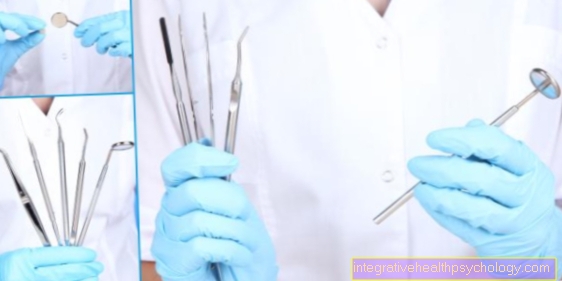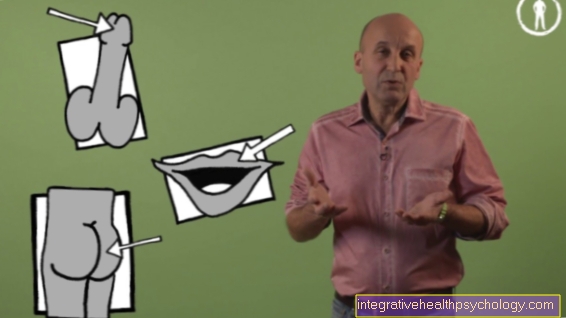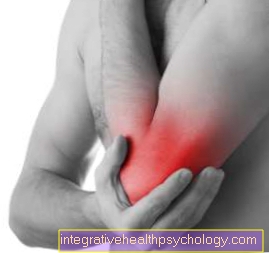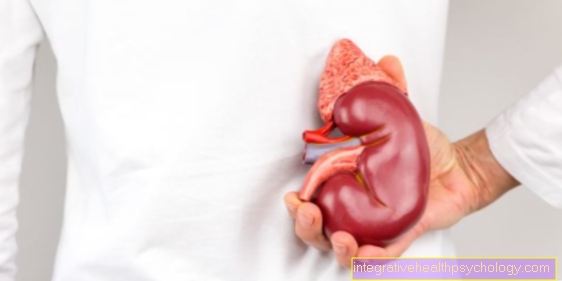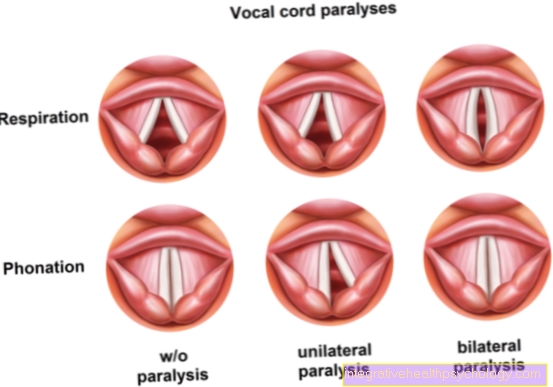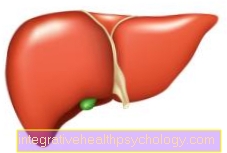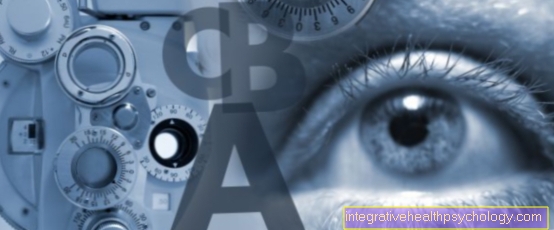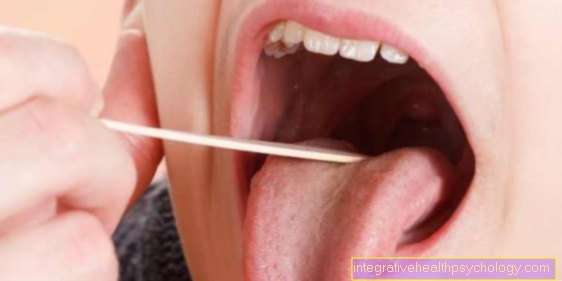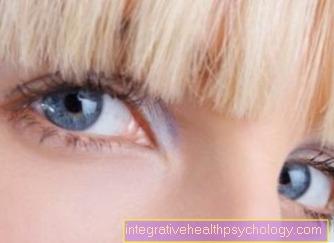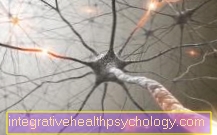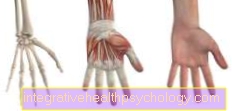Cortisone as a form of therapy in children
Indications - why does my child need cortisone?
Cortisone is an endogenous substance that can be converted into cortisol by the body. This is a stress hormone in the body and reduces inflammatory reactions and overreactions. This results in a wide range of diseases, especially in the chronic area, in which cortisone can help. Applied locally as an ointment, cortisone helps with skin diseases such as neurodermatitis. Another indication can be bronchial asthma.
Even in acute illnesses such as bronchitis or sinusitis, cortisone can relieve the symptoms. Many asthma sprays contain cortisone to prevent the airways from swelling. As a long-term medication, cortisone is used in the treatment of rheumatism in children and as an accompanying therapy for cancer.
In the case of allergic shocks, cortisone can also be used as an emergency medication in combination with adrenaline. In all of the cases described above, the focus is on reducing the body's own defense reactions. If the body is not able to produce cortisone itself, replacement therapy with cortisol preparations is necessary even in babies in order to provide enough hormones for stress reactions. This is necessary if the adrenal cortex is underactive.

For cough or bronchitis
A cortisol preparation does not make sense for a normal cold with a simple cough. However, some children are prone to what is known as pseudo croup. This is an acute coughing fit, usually when the child has already had a cold, in which the larynx becomes very swollen and the child develops shortness of breath. For these cases there is cortisol in suppository form, which can also be administered acutely as a drug by the parents.
The attacks usually occur at night, as the body's own production of cortisol is lower at this time. Treatment with cortisol sprays is also possible for asthmatic dry coughs to make it easier for children to sleep. In this case, it is usually a long-term therapy in combination with other active ingredients such as salbutamol.
Read more on the subject below: Cough in child
With neurodermatitis
Neurodermatitis is an inflammation of the skin that is usually caused by allergies and can be treated with an ointment containing cortisol. The ointment is usually not used as a permanent medication, but only applied thinly to the affected skin areas in periods of severe discomfort. The inflammation of the skin usually improves within a day.
Cortisone can only be used to improve an acute attack, but it is not a curative therapy because neurodermatitis is a chronic, genetic disease. With this local application, the side effects are manageable and are mostly limited to the affected areas. This can lead to a thinner skin that appears translucent.
For more information on this topic, see: Neurodermatitis
If you have a sinus infection
Children can also be treated with cortisone for sinus infections. However, this is only necessary if the symptoms have not subsided after two weeks, as most sinus infections will heal themselves without treatment. This is a nasal spray, which also works locally. In the case of sinus infections, the mucous membranes at the accesses to the sinuses are usually swollen and thus prevent ventilation and healing of the inflammation. The cortisone-containing nasal spray can cause the mucous membranes to swell and restore the ventilation of the sinuses.
Read more on the subject below: Sinusitis
With an otitis media
As with sinusitis, otitis media is often a disease that occurs as a result of a lack of ventilation. In this case it is the ear trumpet, which connects the middle ear with the nasopharynx. By reducing the swelling of the mucous membrane, the ear trumpet can be opened.
In this case, however, no cortisone is used. Decongestant nasal drops are usually sufficient. In severe cases, an antibiotic can also be prescribed to get the otitis media under control. Amoxicillin is mainly used here.
For more information on this topic, see: Otitis media
Side effects with systemic administration
With short-term use, there are hardly any known side effects, as cortisone can now be dosed well. In some cases this can lead to incompatibilities. Since cortisone causes a weakening of the body's immune system, more infections can occur with long-term therapy. This can also include fungal infections in the mouth.
Read more on the subject below: Oral thrush
Strong side effects usually only occur in weakened children with strong long-term therapy in the context of rheumatic diseases and cancer therapies. It can lead to trunk obesity and a moon face with simultaneous emaciation of the legs and arms.
Furthermore, osteoporosis can lead to brittle bones. Growth disorders also occur especially in children. The development of high blood pressure and diabetes is also possible through the administration of cortisone. Side effects cannot be completely avoided even with very strictly controlled dosages.
Side effects with local therapy
When using ointments with cortisol, there is usually only a translucent, thin skin, as today's cortisone preparations are very low-dose. At higher doses, the cortisone can be absorbed into the blood, which can lead to the described systemic side effects. The use of nasal sprays is also associated with possible side effects. With prolonged use, the cortisone attacks the nasal mucous membrane and nosebleeds can occur.
The children often describe headaches as part of the cortisone therapy. Furthermore, the children can get fungal infections or ulcers locally due to the weakened immune system. Increased respiratory infections are also possible. In rare cases, the nasal mucous membrane can be damaged with changes in the perception of smell and taste.
Cataracts with visual impairments are also a rather rare side effect. Side effects can occur more frequently in children who have already had a previous illness.
For more information on this topic, see: Side effects of cortisone
Why should cortisone be given as recommended?
Cortisone therapy can be useful for children who repeatedly suffer from inflammatory diseases. If the pediatrician recommends cortisone therapy, this should not be discontinued independently, but the doctor should be contacted if side effects occur. Particularly in the case of systemic therapy in the context of serious illnesses, the administration of cortisone should correspond exactly to the dosage regimen of the treating pediatrician.
In the case of acute administration of ointments or suppositories, a plan can be agreed with the doctor beforehand under which conditions the parents should or can resort to cortisone. If there are any concerns, they should be addressed openly so that a joint therapy plan can be worked out, which can then be implemented by the parents and children.
Where does the anxiety about cortisone come from?
The first cortisone preparations that came onto the market for medical treatment were very dosed and had significant side effects. Even the first ointments contained amounts that worked throughout the body for many patients. However, today's preparations are much smaller and more specifically dosed and therefore have fewer side effects.
Local application in particular now has almost only local side effects. Another reason for fear of cortisone is the extreme picture after long-term use. Parents fear side effects such as trunk obesity and high blood pressure, which are only to be feared with long-term use in high doses.
Hypercortisolism (excessive cortisol levels in the body) leads to what is known as Cushing's syndrome.
Since cortisone is an endogenous hormone, the effect is also easier to control than chemical drugs, to which the body often reacts unspecifically. This means that the side effects are based on the natural effects of cortisone and are precisely known, while other drugs can cause more unexpected side effects.
Furthermore, in addition to the fear of cortisone, there is often a lack of information about the preparations. Parents should not be afraid to ask the treating pediatrician if anything is unclear.
What can I do to reduce the side effects?
The most important way to reduce side effects is to closely monitor and adjust the dose of cortisone as soon as side effects occur. The time of ingestion is also important, as this way a suitable cortisone level can be maintained in the body. This fluctuates in concentration depending on the time of day.
When using nasal sprays containing cortisone, children should rinse their mouths after use to prevent fungal infections in the mouth. Cortisone ointment should only be applied thinly to the affected skin areas. In the case of open skin, additional antibiotic therapy can be useful so that the weakened immune system is not overwhelmed by pathogens that may invade.
In the case of long-term therapy with cortisone, the withdrawal should take place slowly and gradually so that the body can adapt its own cortisone production. The entire therapy with cortisone should always be closely monitored by the parents and the pediatrician, even with somewhat older children.
What options are there if cortisone doesn't help?
The main effect of cortisone is based on its inhibition of the immune system and thus the weakening of defense reactions. There are a number of different drugs that regulate the immune system.
In organ transplants or autoimmune diseases, for example, calcineurin inhibitors, such as ciclosporin, can be used, which reduce the formation of pro-inflammatory cytokines.
Another group of drugs are the mTor inhibitors, which slow down the development of immune cells. These include the drugs sirolimus and everolimus.
For more information on drugs that regulate the immune system, see: Immunosuppressants
Cytostatics are also known from cancer therapy, which prevent cell growth and cell division. In addition to the cancer cells, these act on all rapidly dividing cells and thus also on many cells of the immune system, which leads to an anti-inflammatory effect.
Monoclonal antibodies are a very new therapeutic alternative. These can be used very specifically against a cell type and are therefore also suitable for the treatment of many autoimmune diseases.
All of these alternatives have a very strong influence on the body and are possibilities to intervene further in severe autoimmune diseases. This requires very precise monitoring by paediatricians and other specialists. The drugs do not cover the full spectrum of action of cortisone, but are usually more specific for certain diseases.


.jpg)




